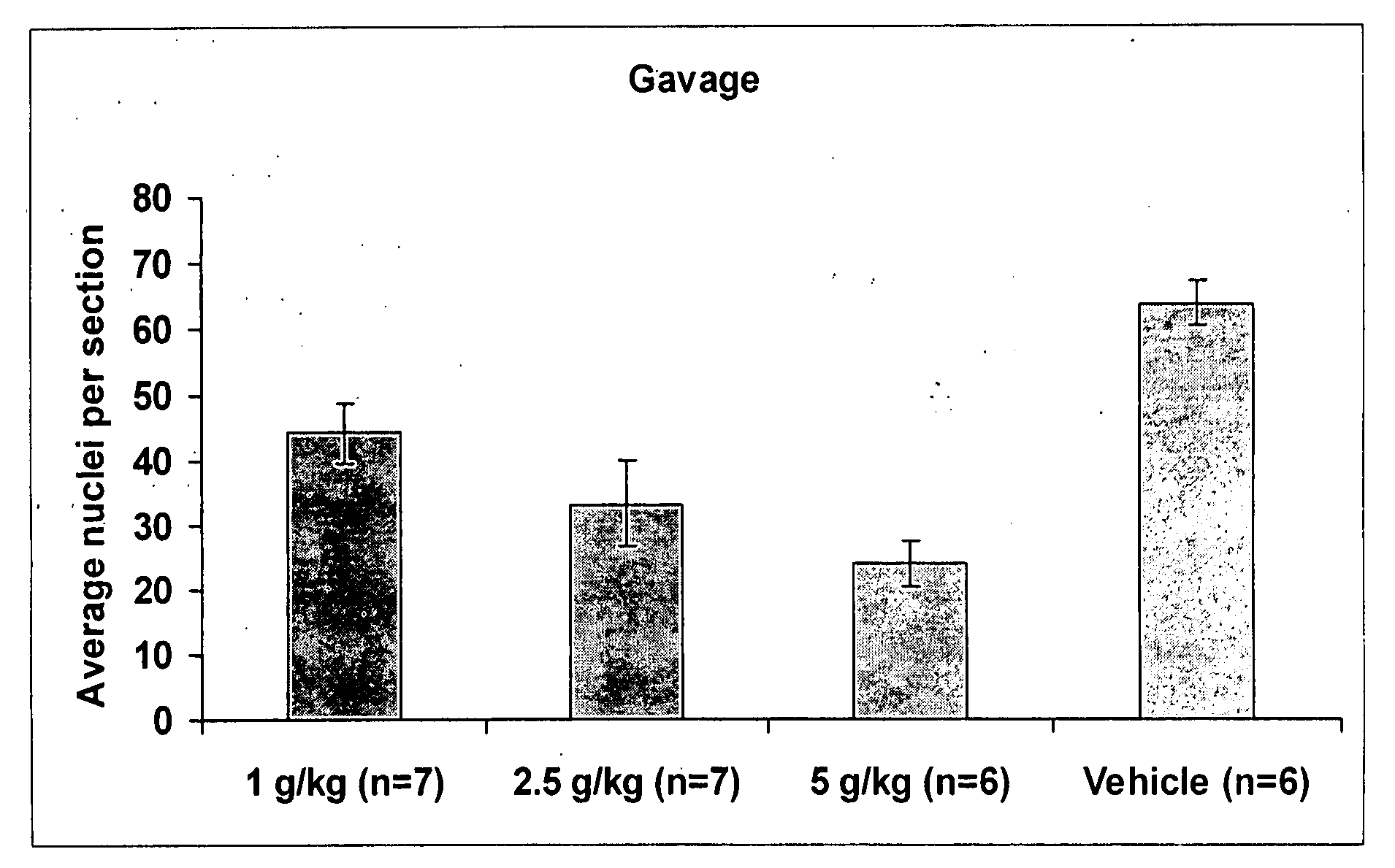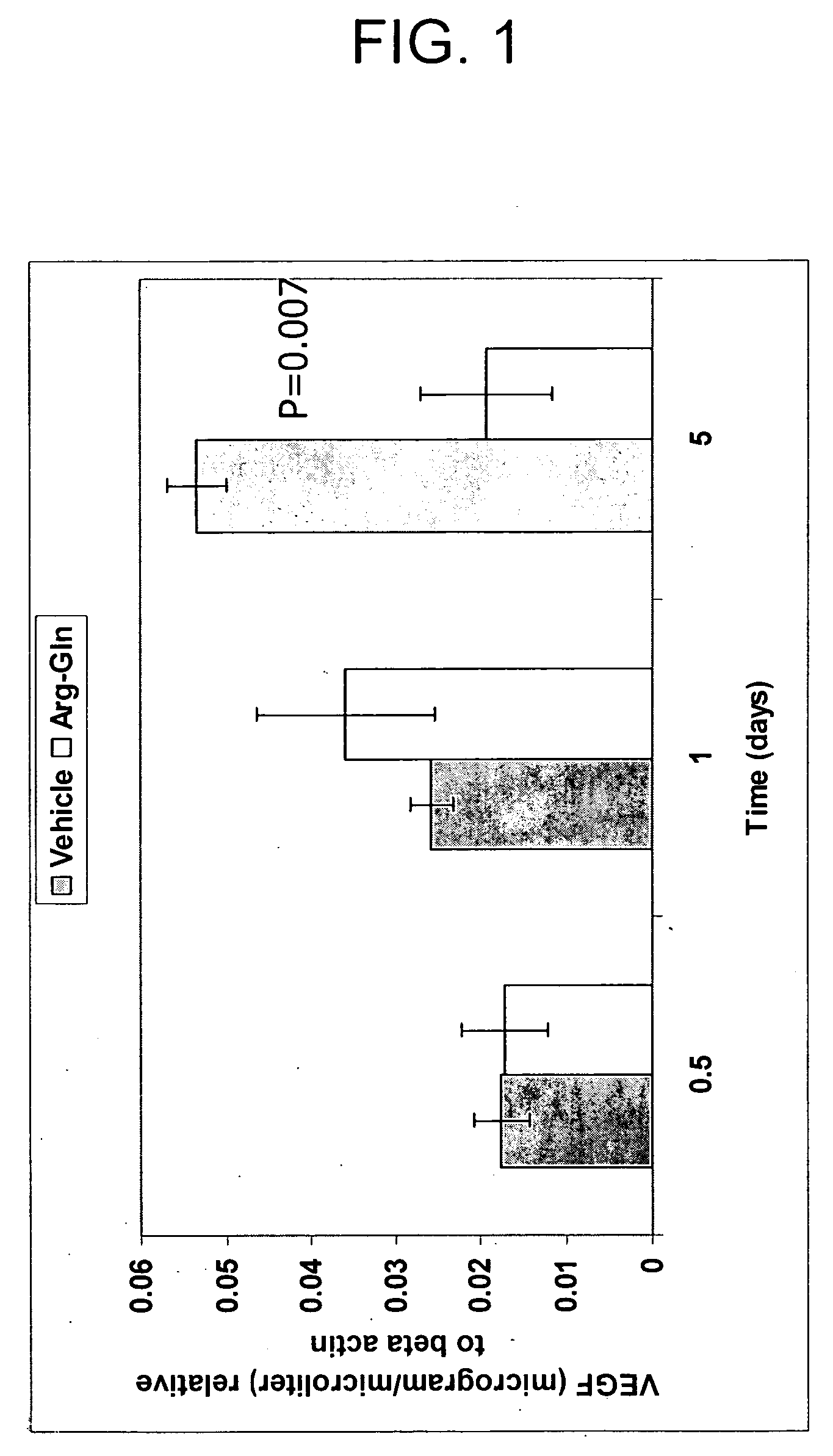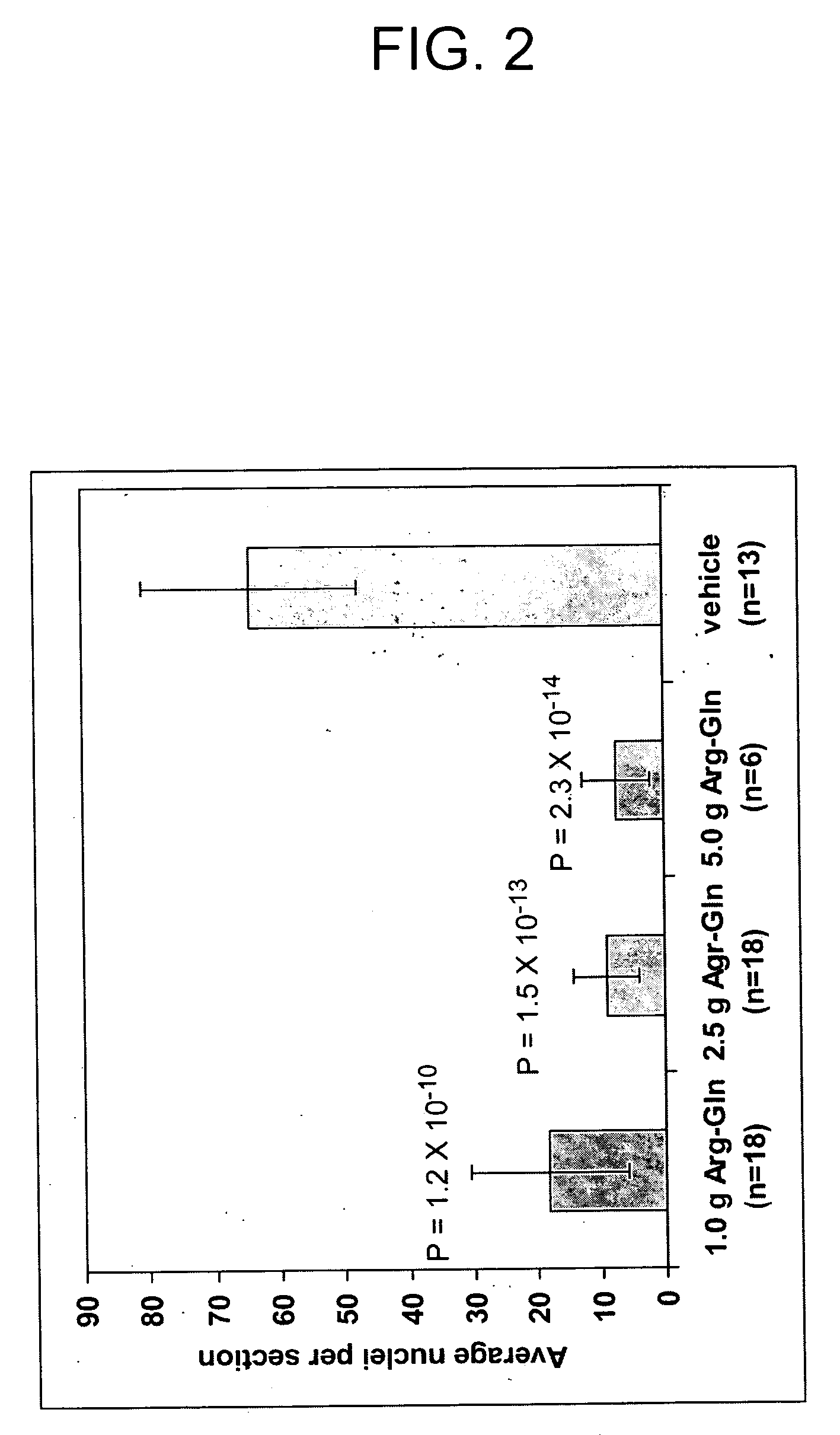Enternal administration of arginine and glutamine for abnormal vascular proliferation
- Summary
- Abstract
- Description
- Claims
- Application Information
AI Technical Summary
Benefits of technology
Problems solved by technology
Method used
Image
Examples
example 1
[0081] This example illustrates the effect of exposure to Arg-gln dipeptide on the production of vascular endothelial cell growth factor (VEGF) in human retinal pigment epithelial cells (hRPE).
[0082] Human eyes were obtained from the National Disease Resource Interchange within 36 h of death. hRPE cells were prepared and maintained as described by Grant et al., in Curr. Eye Res., 9(4):323-335 (1990), and Enzmann et al., in Transpl Immunol, March 7(1): 9-14 (1999). For cell culture experiments, hRPE from passages 3-5 were used. All tissue culture media was purchased from Mediatech, Inc., Herndon, Fla. hRPE cultures were placed in glutamine-free medium for 24 hrs and then were exposed either to 0, 0.5, 1, 2.5 or 5 mg / ml of Arg-gln dipeptide for 48 hrs.
[0083] At the end of 48 hrs, VEGF content of the culture medium containing the hRPE cells was measured using the Quantikine® Human VEGF Immunoassay ELISA kit (R&D Systems, Minneapolis, Minn.). The results of the test are shown in FIG. ...
example 2
[0084] This example illustrates the effect of parenteral administration of Arg-gln on VEGF mRNA production and abnormal retinal vascularization in a neonatal mouse model of retinopathy of prematurity.
[0085] Animals were treated in accordance with the ARVO “Statement for the Use of Animals in Ophthalmic and Vision Research.” Animal procedures were approved by the Institutional Animal Care and Use Committee of the University of Florida. C57BL6 / J timed pregnant mice were obtained from Jackson Laboratories (Bar Harbor, Me.). The mice were housed in the University of Florida Health Science Center Animal Care facilities.
[0086] In the neonatal mouse model of oxygen-induced retinopathy, 7-day old mice were placed with their nursing dams in a 75% oxygen atmosphere for 5 days. (Smith et al., Invest Ophthalmol Vis Sci., 35(1):101-111 (1994). Mouse pups received twice daily intra-peritoneal injections (50 μl) starting on postnatal day 12 (P12) and continuing through postnatal day 17 (P17). In...
example 3
[0100] This example illustrates the efficacy of enteral administration of arginyl-glutamine dipeptide for the prevention of retinopathy of prematurity in a mouse model of oxygen-induced retinopathy
[0101] All animals were treated in accordance with the ARVO “Statement for the Use of Animals in Ophthalmic and Vision Research.” Animal procedures have been approved by the Institutional Animal Care and Use Committee of the University of Florida.
[0102] C57BL6 / J timed pregnant mice were obtained from Jackson Laboratories (Bar Harbor, Me.). The mice were housed in the University of Florida Health Science Center Animal Care facilities.
[0103] In the neonatal mouse model of oxygen-induced retinopathy, 7-day old mice were placed with their nursing dams in a 75% oxygen atmosphere for 5 days. Mouse pups received twice a day gavage feedings of dipeptide or control solution (50 microliter) starting on postnatal day 12 (P12) and continuing through postnatal day 17 (P17). Gavage feeds included veh...
PUM
| Property | Measurement | Unit |
|---|---|---|
| Time | aaaaa | aaaaa |
| Time | aaaaa | aaaaa |
| Time | aaaaa | aaaaa |
Abstract
Description
Claims
Application Information
 Login to View More
Login to View More - R&D
- Intellectual Property
- Life Sciences
- Materials
- Tech Scout
- Unparalleled Data Quality
- Higher Quality Content
- 60% Fewer Hallucinations
Browse by: Latest US Patents, China's latest patents, Technical Efficacy Thesaurus, Application Domain, Technology Topic, Popular Technical Reports.
© 2025 PatSnap. All rights reserved.Legal|Privacy policy|Modern Slavery Act Transparency Statement|Sitemap|About US| Contact US: help@patsnap.com



